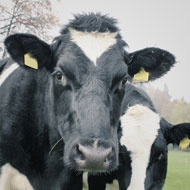
Increase in slaughterings attributed to changes in testing policy
The latest quarterly TB statistics show the herd incident rate and herd prevalence have increased in England between the last two 12-month periods (up to the end of September 2015 and the end of September 2016).
Scotland's figures have remained relatively stable, whereas Wales has seen a decrease in incidence and prevalence.
Defra's report shows the high risk area of England has the highest incidence and prevalence, while the low risk area and Scotland have the lowest.
New herd incidents have decreased in Wales and the high risk area of England by 20 per cent and one per cent respectively. In Scotland, the edge area of England and the low risk area, the number of incidents increased by five per cent, 17 per cent and one per cent respectively.
The percentage of herds not officially TB free (OTF) due to a TB incident increased in the high risk area and edge area of England, but decreased in Wales and the low risk area. In Scotland, the number of non-OTF herds is very low and approximately 45 per cent of herds are exempt from routine surveillance testing.
There was an increase in the number of cattle slaughtered. For England and Wales, Defra attributes this to changes in testing policy. There is an increased use of interferon-gamma blood testing in herds with recurrent or persistent incidents. This is more sensitive than standard skin tests. In addition, since April 2016, all herds with TB incidents in the high risk area must have two skin tests at severe interpretation in order to attain OTF status.
For the full report visit: https://www.gov.uk/government/statistics/incidence-of-tuberculosis-tb-in-cattle-in-great-britain



 The RCVS has announced a new version of its 1CPD mobile app, with enhanced features for veterinary surgeons and veterinary nurses to record their continuing professional development.
The RCVS has announced a new version of its 1CPD mobile app, with enhanced features for veterinary surgeons and veterinary nurses to record their continuing professional development.